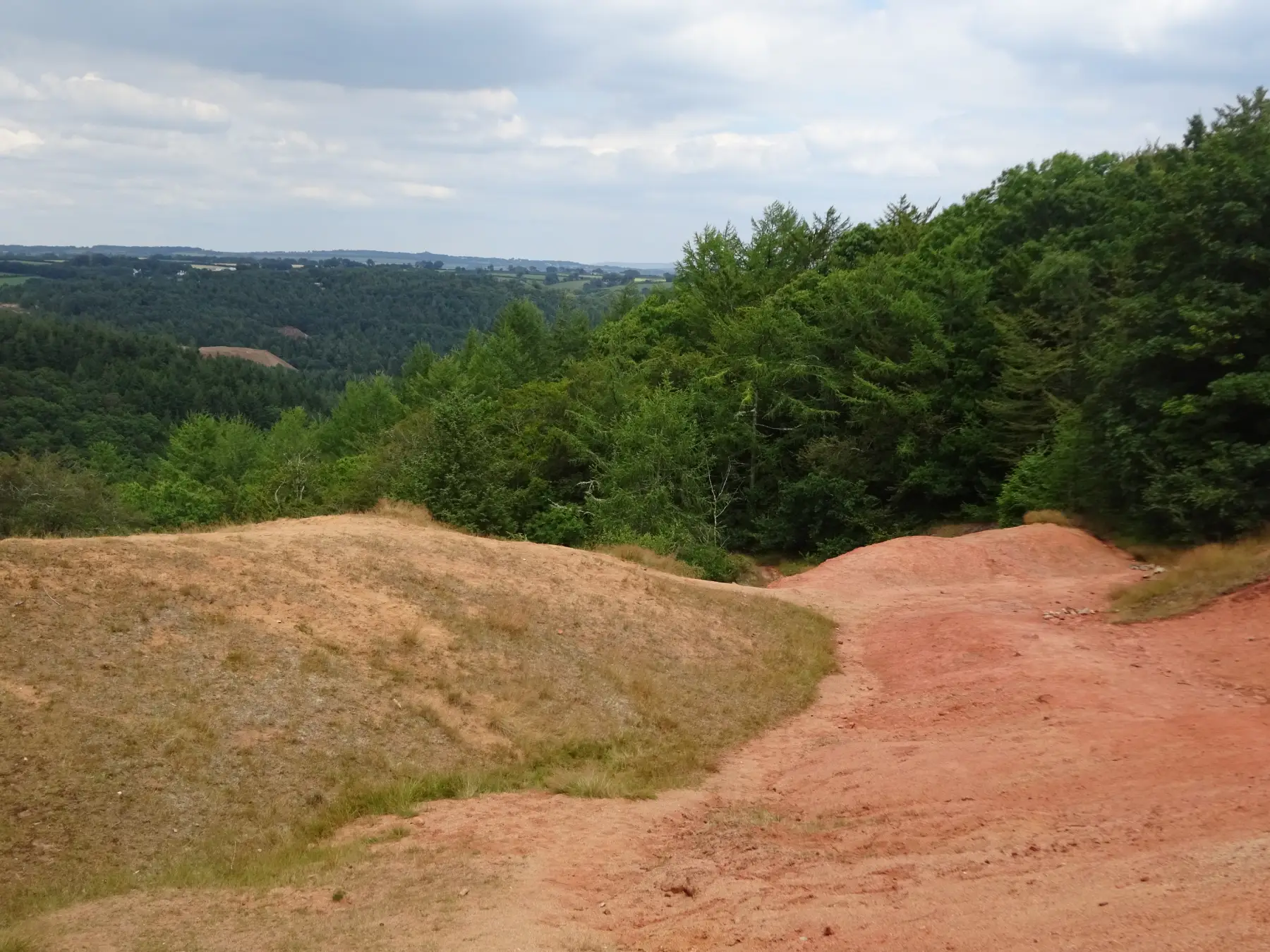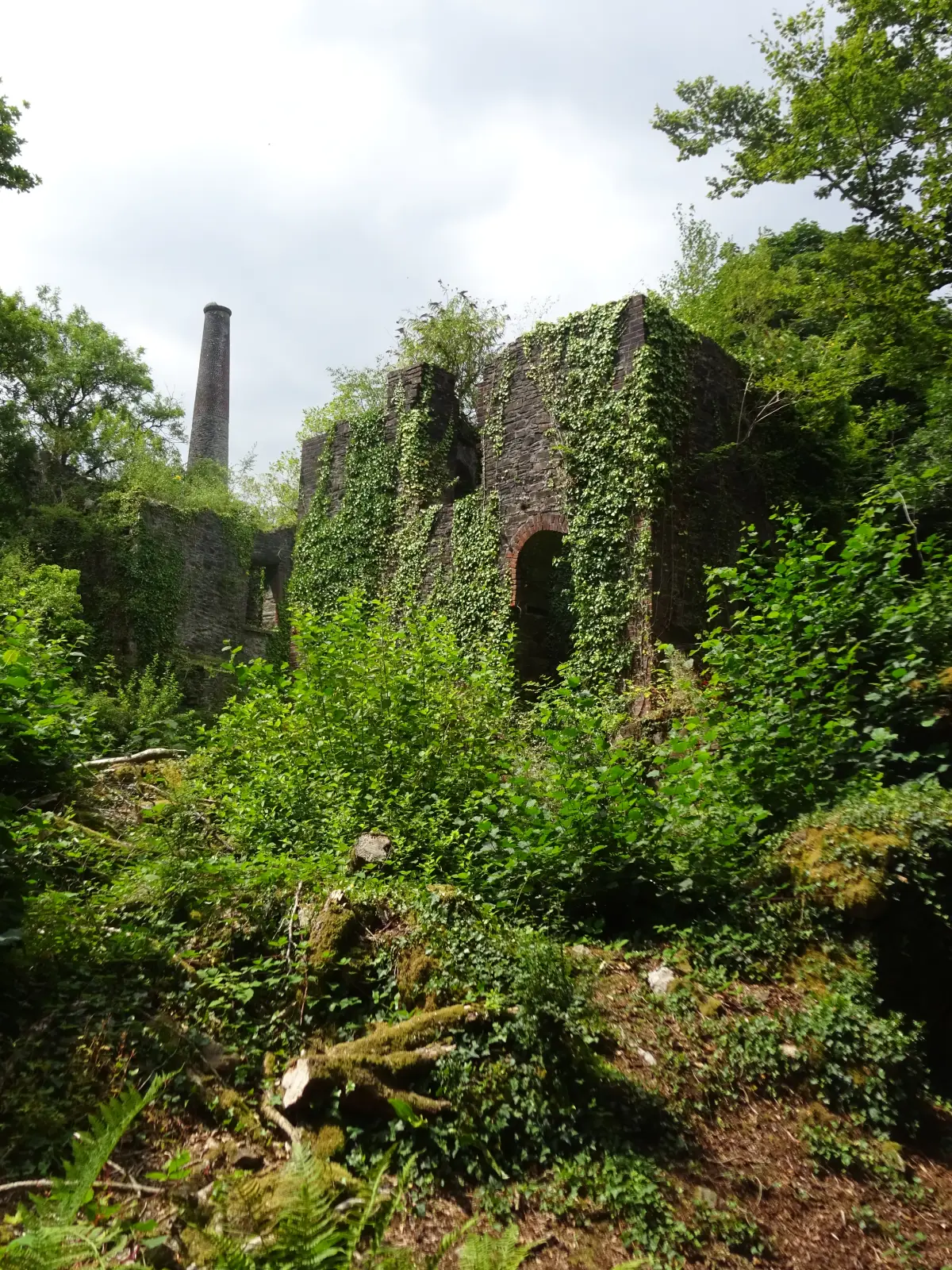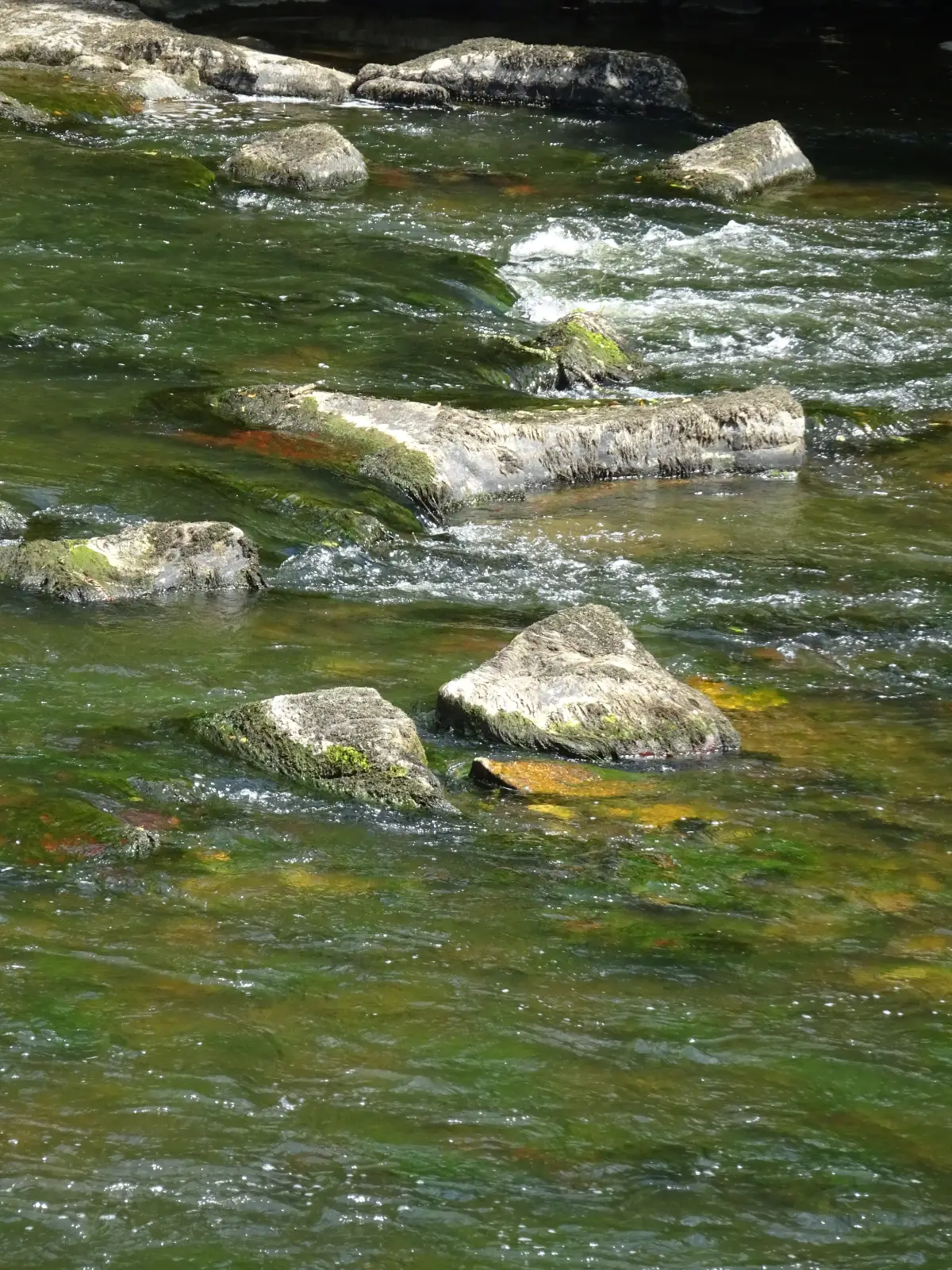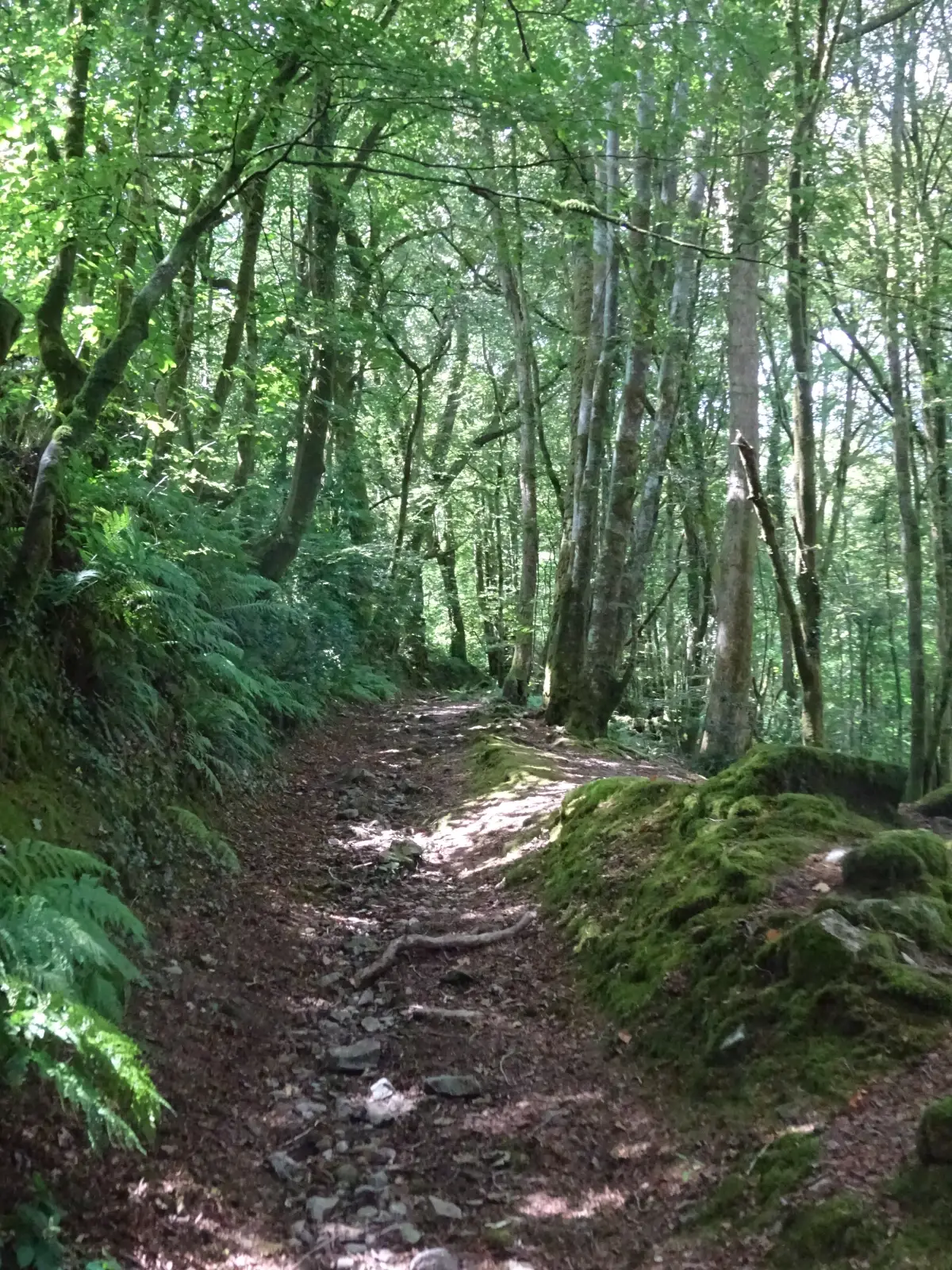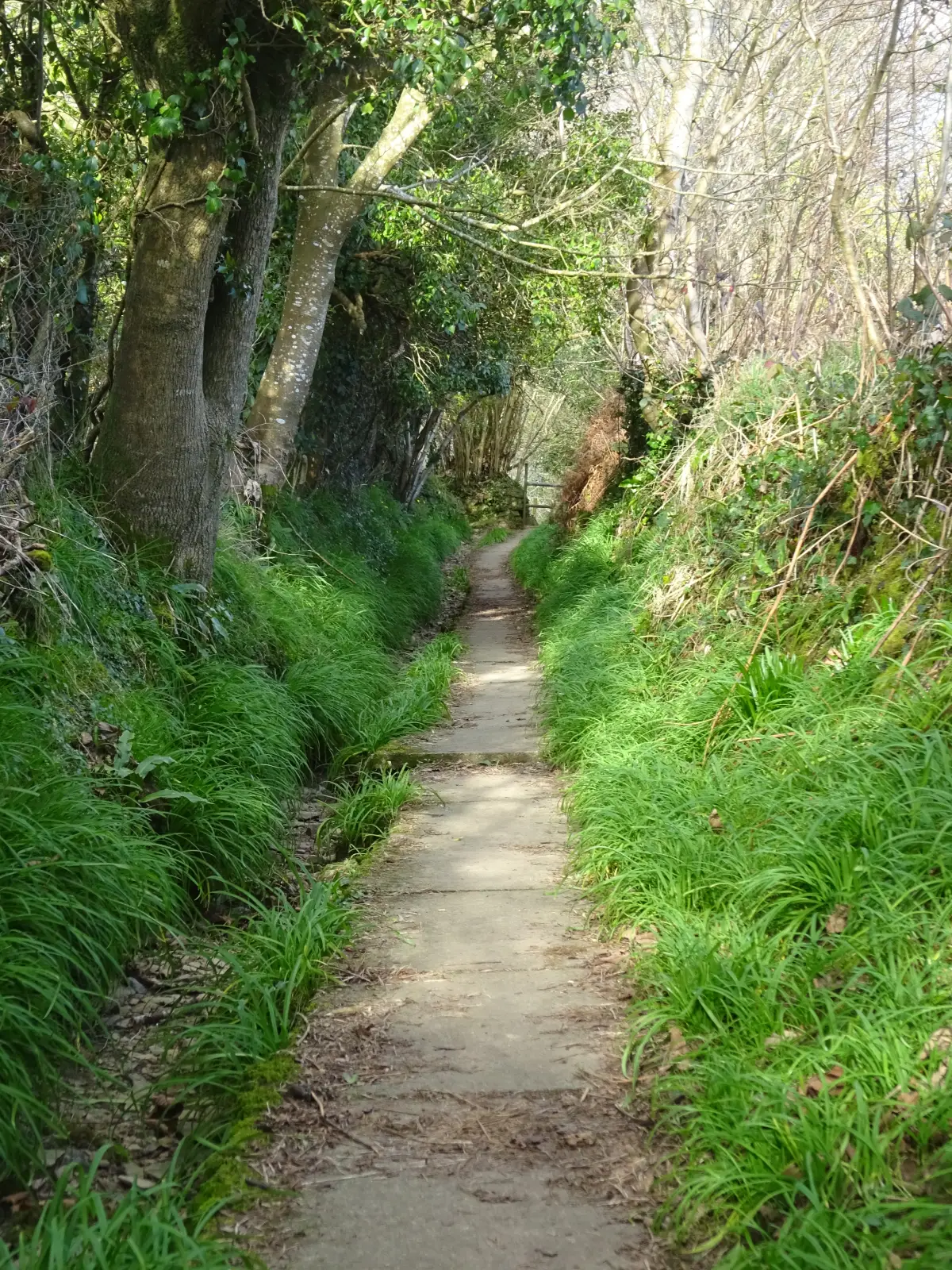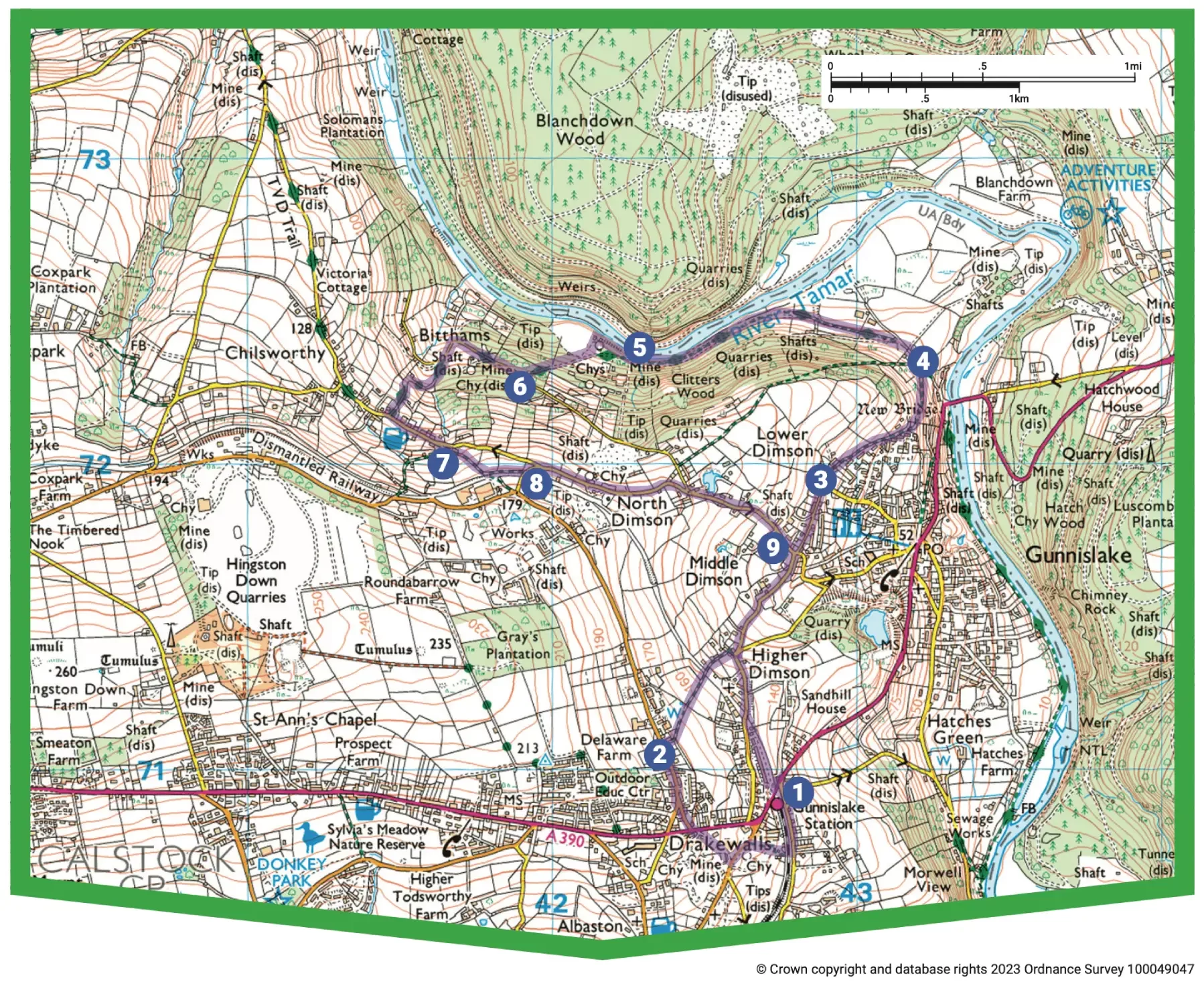Step 1
SX 427709
From the station entrance turn right, then right again onto Well Park Road. After 200 yards turn right under the railway bridge. Where the track bears left, bear right on narrow tarmac path that winds uphill to meet Cemetery Road.
Turn left to reach the remnants of Drakewalls Mine, once the richest tin mine in Cornwall; by the early 19th century it was producing so much tin that it had its own smelter. The first recorded mention of the settlement of Drakewalls – named after the mine – dates from 1815. The Tamar Valley Centre, home to the Tamar Valley AONB offices and a zero-carbon building which generates its own electricity, can be seen ahead.
Just before reaching the gate giving access to the mine site, turn right up a narrow lane that ascends to the A390. Cross with care; head up the ‘No Entry’ lane opposite, then continue on Delaware Road.

